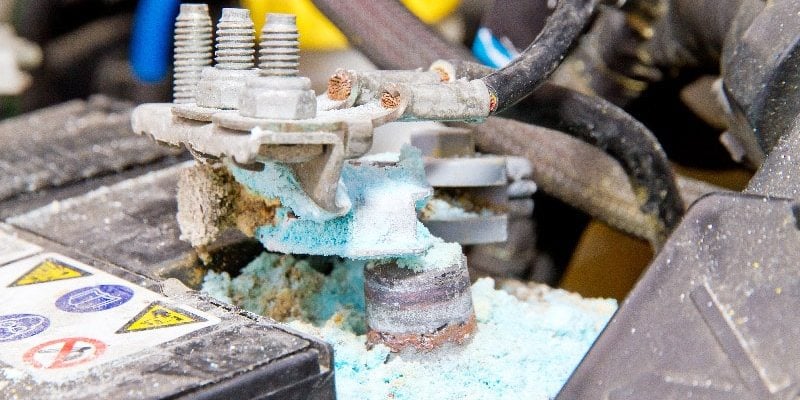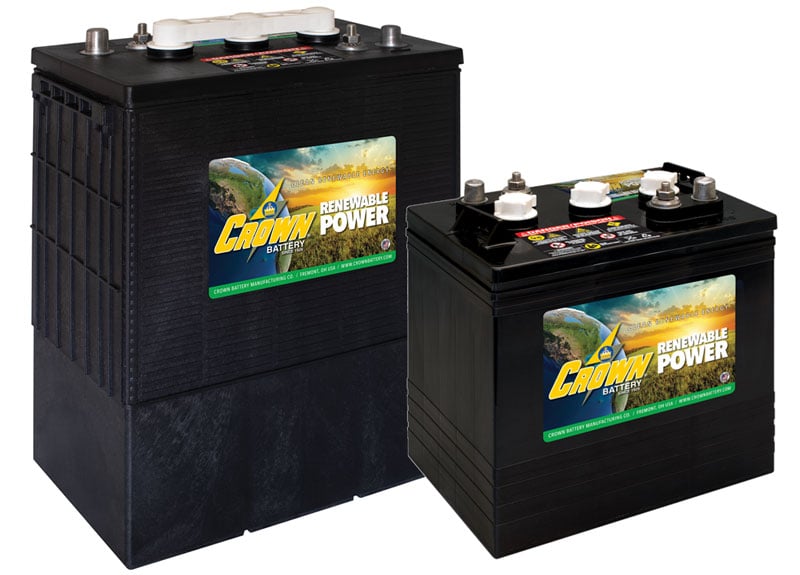A sulfated battery has a buildup of lead sulfate crystals and is the number one cause of early battery failure in lead-acid batteries. The damage caused by battery sulfation is easily preventable and, in some cases, can be reversible. Keep reading to learn more about battery sulfation and how to avoid it.
How does battery sulfation occur
Sulfation occurs when a battery is deprived of a full charge; it builds up and remains on battery plates. When too much sulfation occurs, it can impede the chemical-to-electrical conversion and significantly impact battery performance. When your battery has a buildup of sulfates, the following can happen:
- longer charging times
- excessive heat build-up
- shorter running times between charges
- dramatically shorter battery life
- complete battery failure
What Causes sulfated batteries
All lead acid batteries will accumulate sulfation in their lifetime as it is part of the natural chemical process of a battery. But, sulfation builds up and causes problems when:
- A battery is overcharged
- A battery is stored above 75°F
- A battery is stored without a full charge
how to reverse battery sulfation
Two types of sulfation can occur in your lead battery: reversible and permanent. Their names imply precisely the effects on your battery. If the problem is recognized early enough, it is possible to reverse the sulfation of a battery. However, doing so should only be done by someone with experience working with lead batteries, such as the retail outlet where your battery was initially purchased.
Permanent Sulfation
Permanent sulfation occurs when a battery has been on a low charge for weeks or months. While these can sometimes be salvaged, it is unlikely that restoration is possible.
Reversible Sulfation
Reversible sulfation can often be corrected by an overcharge to an already fully charged battery in a regulated current of about 200mA. The battery terminal voltage can rise to 2.50 and 2.66V/cell (15 and 16V on a 12V monoblock) for about 24 hours. Increasing the battery temperature to 50–60°C (122–140°F) during the corrective service further helps in dissolving the crystals.
While anti-sulfation devices are available that will apply pulses to battery terminals to prevent and reverse sulfation on a healthy battery, they will not reverse the damage entirely and are not always recommended.
How to prevent Battery sulfation
One of the easiest ways to prevent battery sulfation is proper battery storage. When a battery is stored, even if it’s stored at a full charge, a battery must be charged enough to prevent it from dropping below 12.4 volts. Applying this maintenance charge will prevent sulfates from building up. It’s also important to note that while we mentioned a battery shouldn’t be stored in temperatures above 75 degrees, the rate of self-discharge doubles for every 10 degrees above room temperature.
Battery sulfation prevention doesn't have to be a complicated process. Performing regular battery maintenance and following charging best practices is all it takes. Sulfation is why you should not store your battery with an empty charge. Once sulfation of the lead plates has occurred, reversing the effects is highly unlikely, so taking care of your batteries from the start is critical.
This blog was originally published on June 22, 2017 and was last updated on February 8, 2023.












